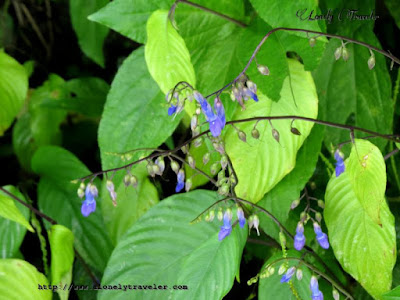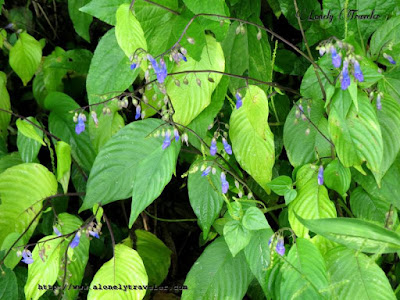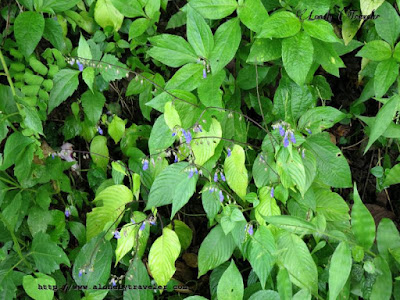| Common Name : | East Indian Klugia. |
| Binomial Name : | Rhynchoglossum notonianum |
| Family : | Gesneriaceae |
| Photo Taken : | Bangladesh |
Name of the plant is East Indian Klugia. By name it is understandable from where it is native. This plant is available inside the hilly area of Bangladesh which is located at eastern part of the country. Binomial name of the plant is Rhynchoglossum notonianum. It belongs to the plant family Gesneriaceae.
East Indian Klugia (Rhynchoglossum notonianum) is a small growing fleshy plant which sometimes has a creepy habit. Leafs are ovate shaped. Base of the leaf is broad and end is slightly narrow and pointy. Leafs are slightly corrugated and alternately arranged around stem. Hairy stem of the plant is black in color.
East Indian Klugia (Rhynchoglossum notonianum) flowers are small, tubular shaped and having two lips. Flowers bloom in a cluster and all hang downwards. The cluster size is not that large. As the flowers are small, they often remain unnoticed. Color of the flower is striking blue. In Marathi this plant is known as Neel because of its blue color.
Photos of these East Indian Klugia (Rhynchoglossum notonianum) were taken from Sajek (of Rangamati), Bangladesh during September 2014.
Written by Lonely Traveler,
For blog icflora.blogspot.com
Photos of these East Indian Klugia (Rhynchoglossum notonianum) were taken from Sajek (of Rangamati), Bangladesh during September 2014.
Written by Lonely Traveler,
For blog icflora.blogspot.com




i dont know you but i love youuuuuuu aaaaaaaaaa im neurodivergent and bangladeshi wild flowers are my special interest, i got to know so many flower names todayyy, flowers i see around me but didnt know the name ToT i can't explain how happyyy it made meee (sorry i wrote this super long comment but i wanted to tell you how much i loved your work)
ReplyDeletealso how do you identify all these flowers and get the bangla name! ToT
ReplyDeleteI study on flowers when I am free. I have few books which have Bangla names of the flowers. I also take help from this book "Plants of India" by H. Piddington (published 1832).
DeleteWow you are writing so amazingly. I loved your writing and knew my desired topic. Keep going. ❤
ReplyDelete